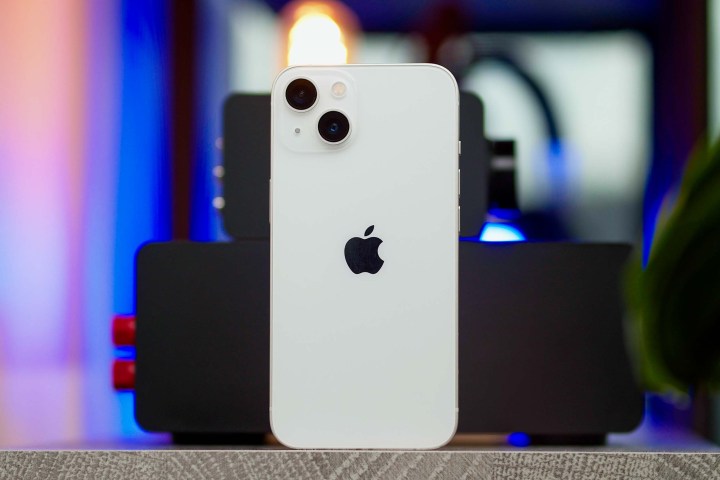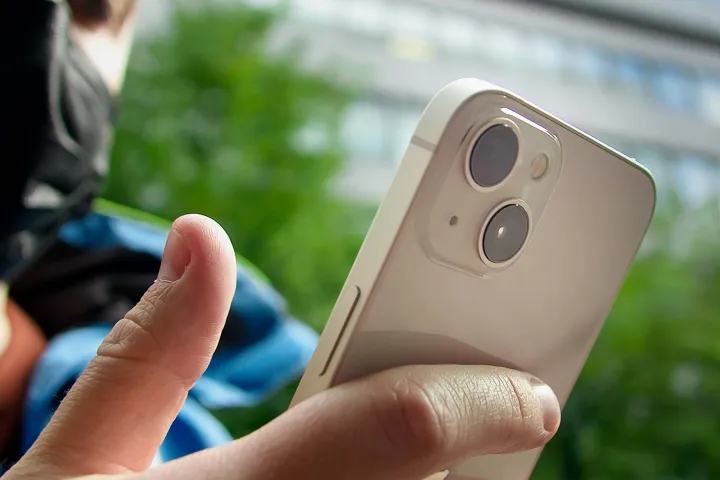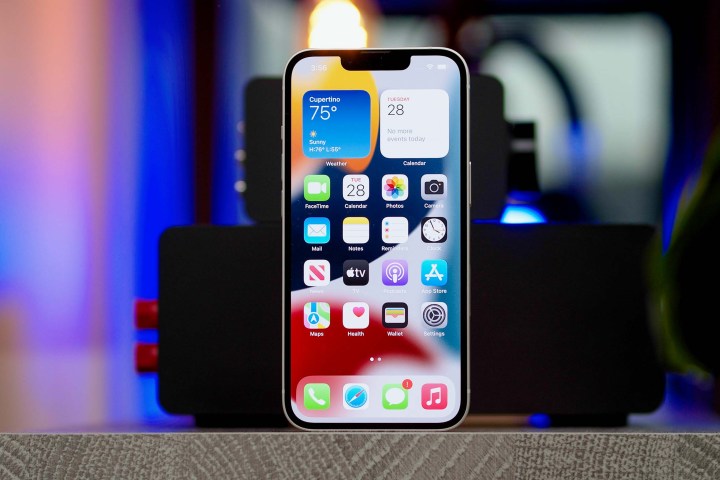The iPhone 13 has landed, fresh with a range of improvements and upgrades over its predecessor, the iPhone 12. It boasts a new, more powerful processor, more internal memory, an expanded battery, and even a narrowed notch. Forgetting Pro and Pro Max models, it is the best smartphone Apple has released to date and one of the best smartphones you’re likely to find.
We live in a Golden Age for flagship smartphones that cram the capabilities of a laptop into a small frame, so the iPhone 13 isn’t short of competition. Its most notable rival is arguably the Samsung Galaxy S21, which also provides an advance over its forerunners while keeping itself more affordable than earlier entries in its long-running series. Like the iPhone 13, it’s one of the best not-too-expensive phones out right now.
The question is, which flagship is better: The iPhone 13 or the Samsung Galaxy S21? We answer this question by putting the two devices through an exacting head-to-head comparison. We look at their specs, designs, displays, performance, cameras, software, and price. This should help you decide which of these two phones is the 2021 flagship for you.
Specs
| iPhone 13 | Samsung Galaxy S21 | |
| Size | 146.7 x 71.5 x 7.7mm (5.78 x 2.81 x 0.30 inches) | 151.7 x 71.2 x 7.9mm (6 x 2.8 x 0.31 inches) |
| Weight | 174 grams (6.14 ounces) | 171 grams (6.03 ounces) |
| Screen size | 6.1-inch Super Retina OLED | 6.2-inch Dynamic AMOLED |
| Screen resolution | 2532 x 1170 pixels (460 pixels per inch) | 2400 x 1080 pixels (421 pixels per inch) Adaptive 48-120Hz refresh rate |
| Operating system | iOS 15 | Android 11 with One UI 3.1 |
| Storage | 128GB, 256GB, 512GB | 128GB, 256GB |
| MicroSD card slot | No | No |
| Tap-to-pay services | Apple Pay | Google Pay, Samsung Pay |
| Processor | Apple A15 Bionic | Qualcomm Snapdragon 888 |
| RAM | 4GB | 8GB |
| Camera | Dual-lens 12-megapixel wide and 12MP ultrawide rear, 12MP TrueDepth front | Triple lens 12MPp wide, 12MP ultrawide, and 64MP telephoto rear 10MP front |
| Video | 4K at up to 60 fps, 1080p at 240 fps | 8K at up to 30 fps, 4K at up to 60 fps, 1080p at 240 fps |
| Bluetooth version | Bluetooth 5.0 | Bluetooth 5.1 |
| Ports | Lightning connector | USB-C |
| Fingerprint sensor | No, FaceID instead | Yes (in-display ultrasonic) |
| Water resistance | IP68 | IP68 |
| Battery | 3,240mAh
Fast charging (20W charger sold separately) MagSafe wireless charging (15W) Qi wireless charging (7.5W) |
4,000mAh 25W wired charging (No charger included in the box) 15W wireless charging Reverse wireless charging |
| App marketplace | Apple App Store | Google Play Store |
| Network support | All major carriers | All major carriers |
| Colors | Black, blue, green, white, and red | Phantom Grey, Phantom White, Phantom Pink, Phantom Violet |
| Prices | $799+ | $900 |
| Review score | 4.5 stars out of 5 | 3.5 out of 5 stars |
Design, display, and durability

Anyone hoping for another design revamp from Apple for the iPhone 13 is likely to be disappointed. It looks more or less identical to last year’s iPhone 12, incorporating the same flat-edged sides that were first seen on recent iPad Pro models. The only notable difference is that the notch — which punctuates the otherwise continuous edge-to-edge display — is now slightly narrower, while the two lenses on the rear of the phone have been given a diagonal (as opposed to vertical) configuration.
As for the Galaxy S21, it does indeed sport something of a renovated design. It has an almost bezel-less front and a punch-hole selfie camera at the top-center of the display, while the rear camera module has been seamlessly integrated into its rear frame. Compared to the S20, it looks even sleeker, and for many it will look more attractive and stylish than the iPhone 13, which is arguably a little conservative. On the other hand, the S21’s plastic back may weaken its aesthetic appeal somewhat, with the iPhone 13’s glass back strengthening its respective looks. Both devices weigh roughly the same and also come in similar dimensions, so they’re both roughly as comfortable to use as each other.
Both phones are also well-matched in terms of their displays. The Galaxy S21 packs a 6.2-inch Dynamic AMOLED display with 2400 x 1080 pixels and an adaptive 48Hz to 120Hz refresh rate, whereas the iPhone 13’s 6.1-inch OLED display carries 2532 x 1170 pixels. This gives Apple’s device more pixels per inch, yet the scales tip quite decisively in the S21’s favor due to its support for a 120Hz refresh rate. The iPhone 13 (but not the 13 Pro or 13 Pro Max) lacks such a refresh rate, which means that the S21’s screen runs noticeably more smoothly. On top of this, the use of an AMOLED display gives it more of a richness, with deeper blacks and stronger colors.
Both phones come with an official IP68 rating, meaning that you can take them for a dive in up to 1.5 meters of water for up to 30 minutes. Despite this equality, the slightly more attractive design of the S21 — as well as its more fluid display — gives it the edge in this opening round.
Winner: Samsung Galaxy S21
Performance, battery life, and charging

The Qualcomm Snapdragon 888 processor drives the Galaxy S21, giving it top-of-the-range performance that hasn’t yet been beaten by any Android phone. When that’s combined with 8GB of RAM, you’ll find multitasking and gaming to be a hassle-free and entirely enjoyable experience. That said, the same goes for the iPhone 13, which contains Apple’s latest A15 Bionic chip. As a 5nm processor, it’s highly agile and capable. Even with the 4GB of RAM on offer, it will ensure that the iPhone 13 is every bit as fast as the Galaxy S21. Regardless of which device you end up choosing, you’ll have a state-of-the-art mobile computer.
The Galaxy S21 offers 128GB or 256GB of storage, while the iPhone 13 comes with these two options and also the option of a hefty 512GB of internal memory. Neither phone provides a microSD card slot, so whichever capacity you go for, you’ll have to make use of the cloud if you go over the limit.
The S21 houses a 4,000mAh battery, which should see you through a day of moderate use, although it may come close to running out under heavier regimens. As for the iPhone 13, it contains a 3,240mAh battery, which may be smaller but performs incredibly well when combined with the device’s software. In fact, our review found that it can last a day and a half under moderate-to-heavy use, so it definitely beats Samsung in this regard.
Both phones support fast charging, with the S21 letting you replenish at 25W and the iPhone doing the same at 20W. However, with the iPhone offering longer battery life, this round goes to Apple.
Winner: iPhone 13
Cameras

The iPhone 13 retains the dual-lens setup of the iPhone 12, with no significant hardware changes to note. This means it offers a 12-megapixel wide camera lens and a 12MP ultrawide lens, with the same aperture sizes as we saw with last year’s model. However, the iPhone 13 does in fact provide its wide lens with sensor‑shift optical image stabilization, something that was previously seen only with the iPhone 12 Pro Max and its wide lens. This offers greater image stabilization, meaning you’ll end up with usable photos in a greater number of cases.
Similarly, the camera setup on the S21 is all but identical to that of the Galaxy S20, with both offering a triple-lens formation that includes a 64MP telephoto lens (in addition to 12MP wide and ultrawide lenses). Nonetheless, Samsung has said that enhancements in the image signal processor in its new chipset and new processing software make better use of the raw data captured by sensors.
Having said that, the S21 performs equally as well as the S21. Its photos are usually impressive in good lighting, with strong colors and clarity. At the same time, processing improvements have toned down the sometimes excessive and overly warm colors visible with the S20. Unfortunately, the S21 continues to struggle in low-light conditions, with the selfie camera in particular lacking detail in less-than-ideal environments.
When it comes to the iPhone 13, its camera builds on the iPhone 12, which already had a fantastic camera. Shots are natural and well-balanced, there’s the ability to choose easily from a variety of styles to suit different tastes, and it handles pretty much every situation and environment very well. This includes nighttime conditions, meaning that the iPhone does indeed edge out the S21 overall.
Winner: iPhone 13
Software and updates

The iPhone 13 runs on iOS 15 right out of the box, offering enhanced Notifications, the ability to share media experiences via FaceTime, and also a new Focus feature (which basically offers different kinds of Do Not Disturb modes). It also continues to provide the same streamlined and highly secure UX that Apple fans have come to know and love.
The Galaxy S21 operates on Android 11. More precisely, it uses Samsung’s very own One UI 3.1, which is a skin for Android 11. It offers a highly intuitive user experience, while also providing a level of configuration that you don’t really get from iOS.
While we’re reluctant to draw a winner in the eternal iOS vs. Android contest, there’s little doubt that the iPhone 13 will be better serviced with updates. Even the iPhone 6S — which was released in 2015 — is getting iOS 15, so you can probably assume that your iPhone 13 will reach iOS 21. It will also receive updates more speedily than the S21, which will suffer from the fact that Samsung isn’t the one developing the phone’s underlying software.
Winner: iPhone 13
Special features

Both phones support 5G, including the faster mmWave band, so you’ll enjoy supremely quick downloading speeds in areas with a 5G network. The S21 even supports the new Wi-Fi 6E standard, making the phone compatible with the highest possible Wi-Fi speeds.
Other than that, there isn’t much to say about the iPhone 13 in terms of special features. You’ll get Face ID as usual, as well as Memoji and Animoji, which let you spice up your messaging with augmented reality characters. You’ll also get Apple’s virtual assistant Siri, although the latter has been a fixture on Apple phones since the iPhone 4S
With the S21, the only notable addition is its compatibility with Samsung’s new SmartTag Bluetooth trackers. These are small sensors that you can attach to personal belongings (e.g. keys) and then track with the SmartThings Find app on your phone in cases where you lose them.
Winner: Tie
Price and availability
The Apple iPhone 13 starts at $799, although you’ll need to pay more if you want the version with 256GB or 512GB of internal memory. The phone is supported by all major carriers and is sold by most third-party retailers dealing in phones and electronics.
The Samsung Galaxy S21 is available from Samsung, starting at $799 (or $849 for the version with 256GB of storage). It’s supported by all major carriers and can also be found at retailers such as Walmart, Best Buy, and Amazon, among many others.
Overall winner: iPhone 13

It’s fairly close, but the iPhone 13 is a better phone overall than the Samsung Galaxy S21. Yes, they are roughly comparable in terms of performance, while the S21 is slightly more attractive. However, the iPhone 13 boasts a clearly superior camera, longer battery life, and arguably also offers friendlier software as well as a guarantee of more updates. This is just about enough to carry the overall win for Apple’s new flagship, although if you’re more of an Android fan you certainly won’t be disappointed by the S21.



